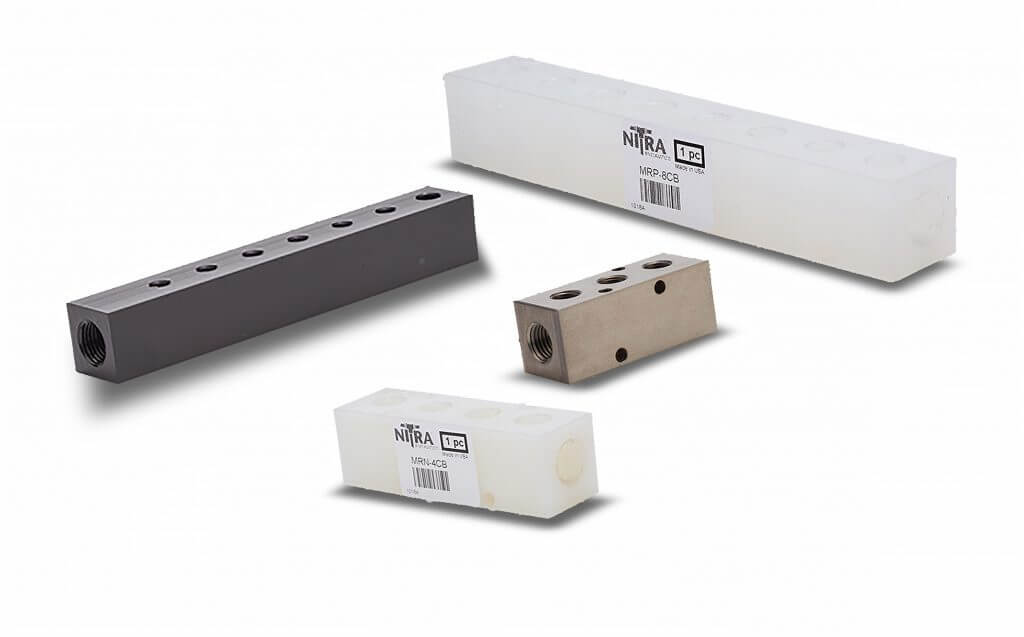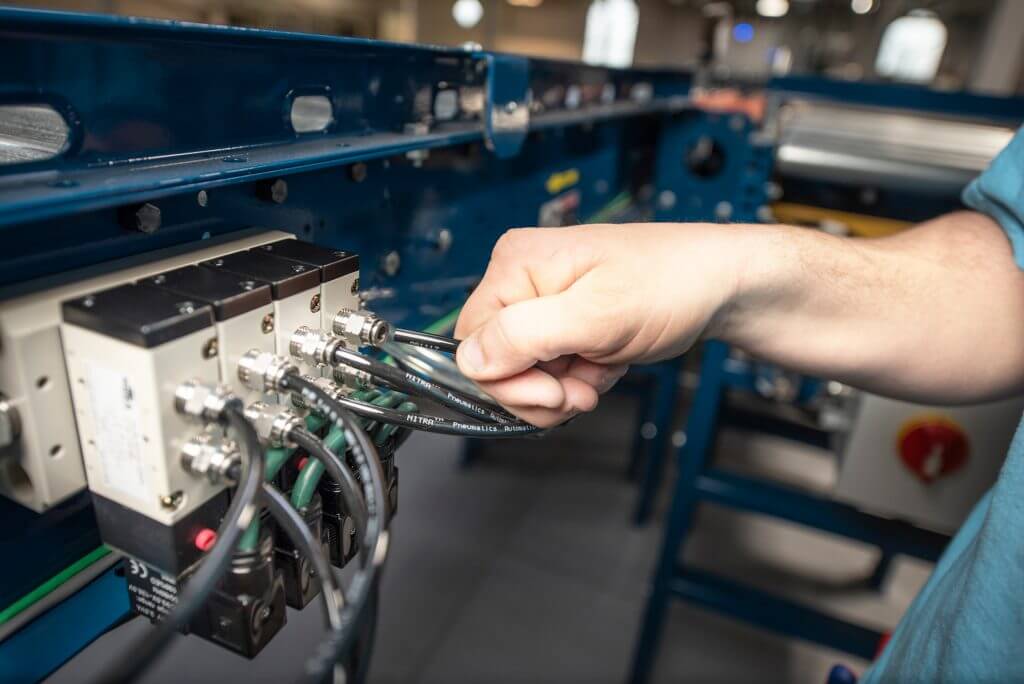Although electrical systems can beat pneumatics for operating efficiency, pneumatics are often more cost-effective over the long haul.
Kevin Kakascik, Technical Marketing Engineer at AutomationDirect, wrote an article for the May 2020 issue of Hydraulics & Pneumatics titled Pneumatic Efficiency: The Big Picture. Here’s a summary, click on the link above for the full text.
Equipment operators and machine designers know pneumatic energy is relatively inefficient compared with electrical systems, but pneumatics offer many advantages. Pneumatics are a powerful and reliable energy source, and they can be cost-effective as a shared resource.
Where is the Inefficiency?

Producing pneumatic energy usually requires an electric motor to create mechanical energy so a compressor can generate compressed air for storage and distribution. Multiple conversions and transportation losses (leaks) mean that only 10% or less of the input energy may result in output energy at end-use devices.
Compressed Air is a Plant-Generated Utility
External energy utilities include electricity and natural gas, which are often used to create in-plant utilities like compressed air and steam. Compressed air is delivered to usage equipment via trunk lines and/or loops, which can be tapped as needed. While electrical devices usually need individual power feeds, many pieces of pneumatic equipment can be tapped right off a header.
Good Utilization Boosts Operating Efficiency

Because supply lines are oversized and can accommodate many users, the overall operating efficiency is best as more devices are connected and the system approaches full utilization. It can help to think of energy users in a plant as commuters going to work. Electrical power distribution is like a bunch of workers each driving their own cars; workable but relatively inefficient. When many pneumatic devices are tapped into a header, it is more like those workers are taking the bus. As the bus approaches full capacity, better utilization makes the overall commuting expense more cost effective.
Simplified Installation and Maintenance
Electrical installations can require significant and specialized engineering, permitting, and subcontractor expenses. Pneumatic installations, on the other hand, can often be economically performed by internal maintenance staff. Servicing or relocating pneumatic equipment is also easier. Pneumatic parts operate reliably for long time periods, and even if they fail repair or replacement is relatively simple.

Maximizing Pneumatic Efficiency
Generating compressed air as a utility and using pneumatics in a facility have a few downsides, which can be outweighed by the benefits of this approach.
By fully using pneumatics as a shared resource and taking advantage of installation and maintenance benefits, overall pneumatic efficiency can be cost-effective and make sense, particularly as compared to electrical alternatives.
There are no free lunches, but a properly installed and maintained compressed air system can economically deliver years of trouble-free service.

